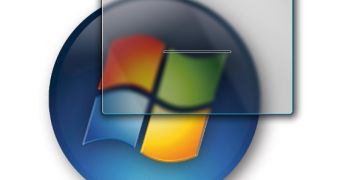While Windows Aero in Windows Vista is indeed the top graphical user interface ever produced by Microsoft, it is also a concept that still holds a great deal of potential. Aero, although Apple has claimed some foul play in relation to Aqua, but none to be had really, indicates the great deal of emphasis and focus that Microsoft has placed on the user experience. Windows Vista brings to the table a unique combination of visuals, style and design, and Aero is the homogeneous sum of the GUI experience. And the fact of the matter is that Microsoft has stopped short of what Aero Glass could have been.
On May 31, 2007 Microsoft was granted two separate patents by the US Patent & trademark Office: "Glass appearance window frame colorization" and "Dynamic reflective highlighting of a glass appearance window frame", courtesy of Long Zheng. Both are intimately connected with Vista, and essentially with Windows Aero. Glass appearance window frame colorization refers to "a method for changing a color value and/or level of opacity value of a glass appearance window frame for an application window. The method includes steps of determining a defined color value and a defined level of opacity value to apply to a glass appearance window frame and displaying the glass appearance window frame in accordance with the defined color value and the defined level of opacity value."
According to the patent for colorization, colors in Windows Aero are designed to oscillate in accordance with the default color values of items in the background and the level of opacity. Still Microsoft has not continued with plans to associate color and opacity alterations with an automatic mechanism, or make it application specific, but opted instead to go on user input and configuration. Additionally, the dynamic reflective highlighting of a glass appearance window frame describes the modifications of the reflections in Windows Aero.
"An illustrative method includes steps of displaying a first reflective highlight on a glass appearance window frame of an application window, calculating a second reflective highlight in response to detection of an event, and changing the displayed first reflective highlight on the glass appearance window frame of the first application window to the second reflective highlight. The event may correspond to a command to move and/or resize the application window, determination of a time of day event, determination of a change in active/inactive status of the application window, or to a command to change a reflective highlight configuration" reads a fragment of the patent's abstract.
The reflective highlights on the glass window frame of an application window with Windows Aero enabled in Vista change in response to the modification of the position of the desktop items. In this context, not only would have the highlights in the Aero translucent graphical user interface moved in with the windows, but also with the "sun" reflecting the time of day. Microsoft has chosen not to deliver the complete experience of Windows Aero, and some features have been cut short. The real question at this time is if Microsoft still plans to built on Windows Aero, or if the Vista user interface remains as it is, and only with Windows Seven will users be able to enjoy a Time of Day contextual GUI.

 14 DAY TRIAL //
14 DAY TRIAL //